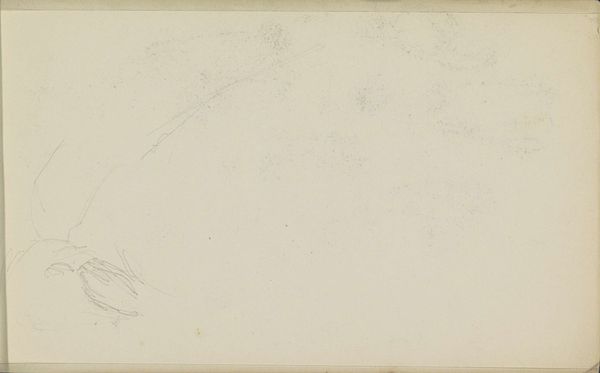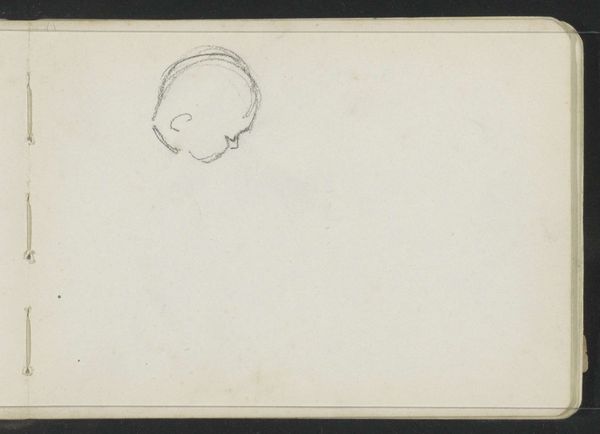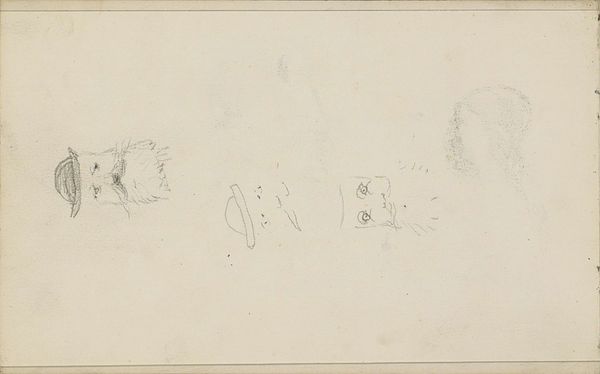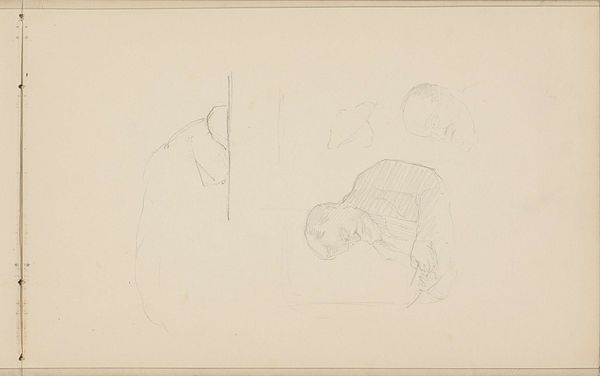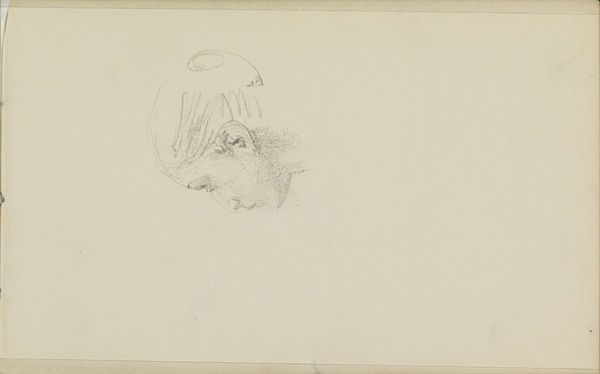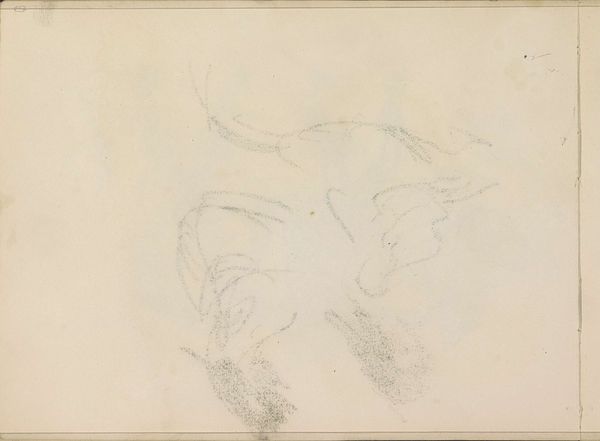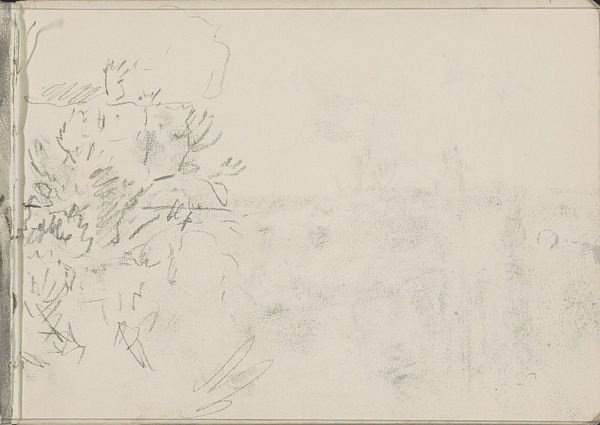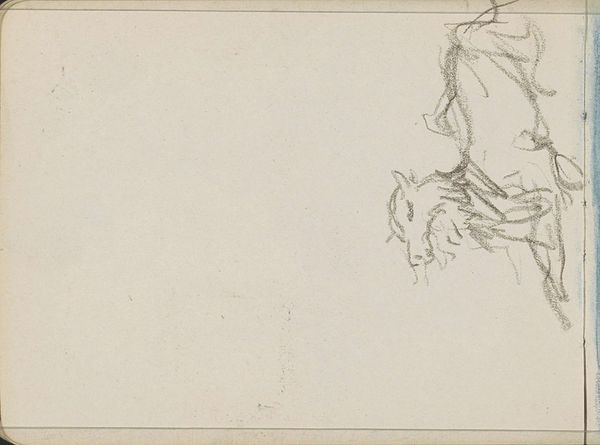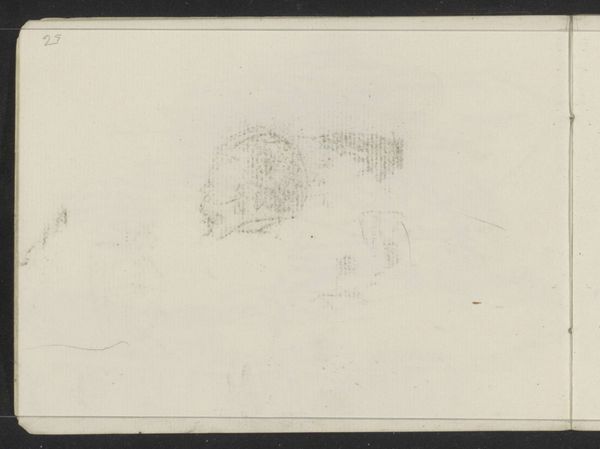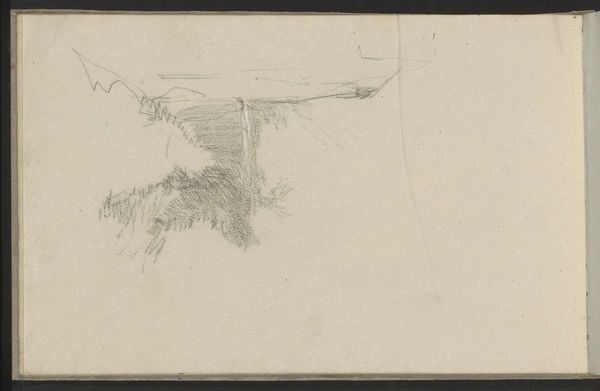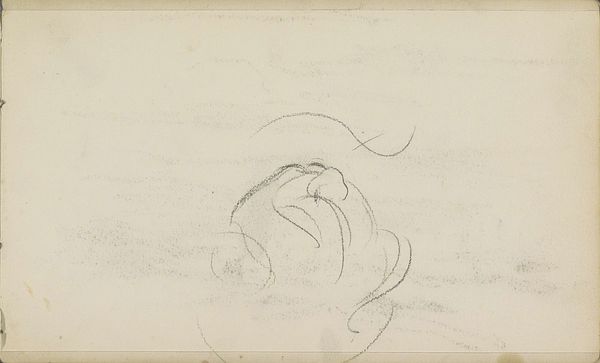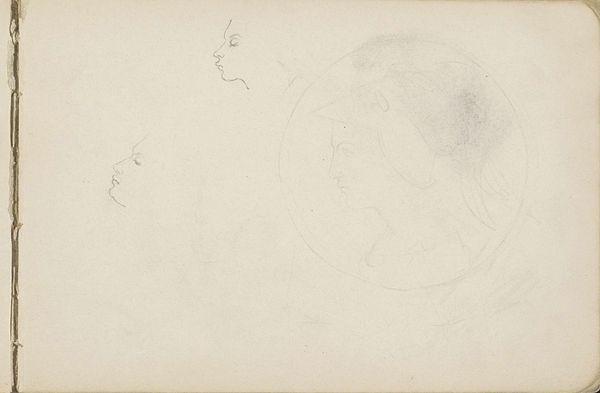
drawing, pencil
#
portrait
#
drawing
#
pencil sketch
#
landscape
#
pencil
#
academic-art
#
realism
Copyright: Rijks Museum: Open Domain
Curator: Today we're looking at a drawing titled "Head of a Man with a Beard and Spiky Hair," created by Anton Mauve sometime between 1848 and 1888. It’s a pencil sketch currently held at the Rijksmuseum. Editor: My initial reaction is one of… starkness. It's incredibly sparse. The subject is confined to the upper right, almost as if hesitant to occupy the space. And the lines are so faint! Curator: Precisely. Note the economy of line. Mauve achieves form and expression with remarkable efficiency. Look at how he suggests volume and texture in the hair and beard with just a few, carefully placed strokes. It speaks to the mastery of academic art and realism converging into a beautiful harmony. Editor: I'm curious about the type of pencil he used. The thin, almost fragile quality of the lines makes me wonder if he favored a harder lead, one that required more deliberate pressure. And the paper, what type of paper did he work on to achieve such detail with the medium at hand? Knowing the materials sheds light on the labor that produced the final aesthetic product, and ultimately shapes how we consume the artwork. Curator: An excellent point. The pencil, acting as an extension of the artist's hand, navigates the page creating contrast in darkness, shadow, and thus revealing volume. There is no room for error. If a heavier tool was to be used in the hand, the light character would transform the final image. Editor: That’s so right, which raises questions about the broader social context. This was likely created as a study, part of his practice in observation and translating reality onto paper. What sort of training did Mauve undergo? And how did those production standards within workshops influence the aesthetic choices we're seeing here? Curator: No doubt his training influenced his compositional choices. But one could argue, independent of this social context, that Mauve also had his intentions behind the artwork; by isolating the subject he might have meant to accentuate the figure’s introspective nature, thereby capturing his likeness, and his psychology too. The lines that he chooses to capture for such realism! Editor: Agreed. It's remarkable how he evokes character with so little. For me, appreciating the tools and labor involved deepens that appreciation. Curator: And for me, by recognizing the inherent visual techniques, it enables an even stronger viewing experience and a true admiration for Mauve’s skill. Editor: A perfect way to look at the dialogue between intention, method, and form that helps us understand works of art today.
Comments
No comments
Be the first to comment and join the conversation on the ultimate creative platform.

